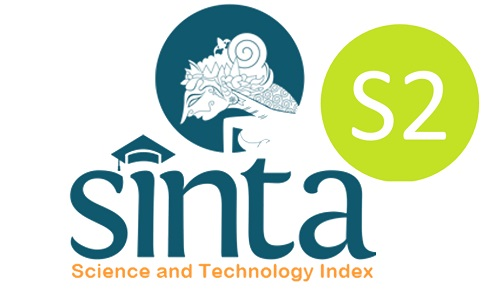Investigating translation strategies in Indonesian best seller novel
DOI:
https://doi.org/10.22373/ej.v9i2.11804Keywords:
TranslationAbstract
Translation strategies have been the subject of extensive investigation. Most people believe that translators use specific strategies and that basic translation strategies are sometimes insufficient. As a result, numerous scholars have investigated and analyzed various translation techniques from various perspectives. This study determined the translation strategies in the novel of Negeri 5 Menara and its English Version, The Land of Five Towers using Baker's (2011) framework. This study was conducted using a descriptive qualitative technique to determine the translation strategies in Negeri 5 Menara and its English version, The Land of Five Towers. There were 130 data points in all. According to the findings, 11% about the use of the more general word, 14 % in the use of the more neutral or expensive word, 8% of cultural substitution, 5% of loan words, 4% of omission, paraphrase with related terms accounted for 57% of all translation tactics, while paraphrasing with unrelated words accounted for 2%, and there was no data on illustration. There were 21 uncategorized data points for every given strategy. It was predicted that in the future, a translator, who is also a pre-service teacher, should widen his or her translation methodologies in order to combat non-equivalence translation.
Downloads
References
Acioly-Régnier, N. M., Koroleva, D. B., Mikhaleva, L. V., & Régnier, J. C. (2015). Translation competence as a complex multidimensional aspect. Procedia - Social and Behavioral Sciences, 200, 142-148.
Akrom, M. F. (2013). The Equivalence Analysis of Preposition Di and Its Transaltion in Ahmad Fuadi’s Negeri 5 Menara.). Jurnal Bahasa dan seni. 1 (2), 12-34.
Alves, F., & Campos, T. L. (2009). Translation technology in time: Investigating the impact of translation memory systems and time pressure on types of internal and external support. In Behind the Mind: Methods, Models and Results in Translation Process Research, edited by S. Göpferich, A. L. Jakobsen, and I. M. Mees, 191-218. Copenhagen: Samfundslitteratur.
Angelone, E., & Shreve, G. M. (2011). Uncertainty management, metacognitive bundling in problem-solving and translation quality. In Cognitive Explorations of Translation, edited by S. O’Brien, 108-129. London: Continuum.
Anwar, F. Z. (2020). Strategies and Techniques of Translation in Translating Songs as 21st Century Curriculum. Manajemen Pendidikan, 15(1), 34-43.
Baker, M. (2011). In other words: A course book on translation (2nd ed.). London: Routledge.
Board, E. M. T. (2017). European master’s in translation competence framework. Accessed June 15, 2019 from https://ec.europa.eu/info/sites/info/files/emt_competence_fwk_2017_en_web.pdf
Bowen, G. A. (2010). Document Analysis as a Qualitative Research Method. Qualitative Research Journal, 9(2), 27-40.
Bundgaard, K., & Christensen, T. P. (2019). Is the concordance feature the new black? A workplace study of translators’ interaction with translation resources while post-editing TM and MT matches. The Journal of Specialised Translation, 31, 14-37.
Carrasco Flores, J. A. (2021). Analysing English for translation and interpreting materials: Skills, sub-competences and types of knowledge. The Interpreter and Translator Trainer, 15(3), 326-342.
Chesterman, A. (2013). Models of what processes?. Translation and Interpreting Studies, 8(2),155-168.
Cotos, E. (2014). Enhancing writing pedagogy with learner corpus data ReCALL, 26(2), 202-224.
Daems, J., Carl, M., Vandepitte, S., Hartsuiker, R., & Macken, L. (2015). The effectiveness of consulting external resources during translation and post-editing of general text types. In New Directions in Empirical Translation Process Research: Exploring the CRITT TPR-DB, edited by M. Carl, S. Bangalore, & M. Schaeffer, 113-138. Switzerland: Springer.
Dinckan, S. (2010). Translation Studies. Third Edition. London: Routledge.
Dragsted, B., & Carl, M. (2017). Inside the monitor model: Processes of default and challenged translation production. In Crossroads between Contrastive Linguistics, Translation Studies and Machine Translation: TC3II, edited by O. Czulo, & S. Hansen-Schirra, 405-414. Berlin: Language Science Press.
Dungcik, M., & Bety, B. (2014). Standardized system of Jawi in Malay Language. Tamaddun Jurnal Sastra dan Kebudayaan Islam, 14(2), 79-95.
Ehrensberger-Dow, M., & Massey, G. (2017). Socio-technical issues in professional translation practice. Translation Spaces, 6(1), 104-121.
Horcas, A. (2014). The usefulness of translation in foreign language learning: Students’ attitudes. International Journal of English Language & Translation Studies, 2(1), 153-170.
Fata, I.A & Aprilya A. (2021). Examining personification in songs as one of the English teaching materials. Englisia: Journal of Language, Education, and Humanities, 8 (2), 1-15
Fitriani, C. N. (2015). A Translation Analysis of Address terms of Negeri 5 Menara in The Land of Five Towers. Journal of Language learning. 2 (2), 44-52.
Fois, E. (2020). ELT and the role of translation in developing intercultural competence. Language and Intercultural Communication, 20(6), 561-571.
Fuadi, A. (2009). Negeri 5 Menara. Jakarta: Gramedia Pustaka Utama.
Fuadi, A. (2011). The Land of Five Towers. Translator: Angie Kilbane. Jakarta: Gramedia Pustaka Utama.
Ghazanfari, M. (2015). Domestication in literary translation: The English translation of Hedayat’s Blind Owl. Translation Studies, 3(11), 26-38.
González-Davies, M., & Enríquez-Raído, V. (2016). Situated learning in translator and interpreter training: Bridging research and good practice. The Interpreter and Translator Trainer, 10(1), 1-11.
Gough, J., & Perdikaki, K. (2018). Concurrent translation - Reality or hype? In TC40 E-Proceedings, 79-88. London: ASLING. Accessed June 24 2019. https://www.asling.org/tc40/wp-content/uploads/TC40-Proceedings.pdf
Halliday, M.A.K (2007). Language and Education. Great Britain: Biddles Ltd., King’s Lynn:Norfolk.
Herrero, E. C. (2015). English language teaching for translator and interpreter trainees: Syllabus analysis and design. Quaderns, (22), 289-306.
Horcas-Rufián, S., & Kelly, D. (2020). Inverse (A-B/C) translation education in Spain under the EHEA. Perspectives: Studies in Translation Theory and Practice, 28(2), 300-319.
Hvelplund, K. T. (2017). Translators’ use of digital resources during translation. Hermes, 56, 71-87.
Ismail, N.M. & Fata, IA. (2021). Improving Reading TOEFL Score through Note Taking Strategy. Al-Ta lim Journal, 28 (1), 46-54
Ivanova, O. (2016). Translation and ITC competence in the globalised world. Procedia - Social and Behavioral Sciences, 231, 129-134.
Liang, B. (2020). Corpus-based priming for inverse translation training. Linguistics and Literature Studies,8(4),215-222.
Luong, N. (2016). Equivalence in the Vietnamese translation of Shakespeare’s Romeo and Juliet. International Journal of English Language & Translation Studies, 4(1),1-15.
Latief, M. M. A. (2020). Translation/interpreting learning and teaching practices research.Translator and Interpreter Education Research, 9(3), 39-59.
Mutta, M., Pelttari, S., Salmi, L., Chevalier, A., & Johannson, M. (2014). Digital literacy in academic language learning contexts: Developing information-seeking competence. In Digital Literacies in Foreign and Second Language Education, 12. edited by. J. P. Guikema & L. Williams, 240-258. CALICO Monograph Series.
Newmark, P. (1988). A Textbook of Translation. Hertfordshire: Pretice Hall.
Ramsden, T. (2021). Paraphrasing translation as a strategy to help L2 learners develop their L2 productive competence: Pedagogical perspectives. The Journal of ASIA TEFL, 18(3), 816-836. http://dx.doi.org/10.18823/asiatefl.2021.18.3.5.816
Risku, H. (2014). Translation process research as interaction research: From mental to socio-cognitive processes. MonTI Special Issue 1, 331-353.
Risku, H., & Windhager, F. (2013). Extended translation: A sociocognitive research agenda. Target: International Journal of Translation Studies, 25(1), 33-45.
Rohmani, S. (2013). Analysis of Code Switching in Novel. Journal of research in language learning. 1(2), 1-16.
Saputra, N. (2020). Exploring Indonesia English teachers’ perspectives toward the use of translation in English language teaching (ELT) classroom. International Journal for Educational and Vocational Studies, 2(3), 401-405. DOI: https://doi.org/10.29103/ijevs.v2i3.2210
Shih, C. Y. (2017). Web search for translation: An exploratory study on six chinese trainee translators’ behaviour. Asia Pacific Translation and Intercultural Studies, 4 (1), 50-66.
Tursina, P., Susanty, H., & Efendi, Z. (2021). Teacher corrective feedback VS Cambridge English Write and Improve (CEWI) in improving EFL students’ writing performance. English LAnguage Study and TEaching (ELASTE), 2(1), 30-43.
Trisnawati, K. I. (2014). Skopos Theory: A Practical Approach in the Translation Process, Englisia Journal of Language, Education, and Humanities, 1(2), 245-255.
Yusuf, Y.Q., Fata, I.A & Chyntia. (2018). Types of Indonesian-English code-switching employed in a novel. Kasetsart Journal of Social Sciences, 41 (2), 208-213
Zapata, J. (2016). Investigating translator-information interaction: A case study on the use of the prototype biconcordancer tool integrated in CASMACAT. In New Directions in Empirical Translation Process Research: Exploring the CRITT TPR-DB,139-152. Springer, Charm.
Downloads
Additional Files
Published
Issue
Section
License
Proposed Policy for Journals That Offer Open Access
Authors who publish with Englisia journal agree to the following terms:
- Authors retain copyright and grant the journal right of first publication with the work simultaneously licensed under a Creative Commons Attribution License that allows others to share the work with an acknowledgement of the work's authorship and initial publication in this journal.
- Authors are able to enter into separate, additional contractual arrangements for the non-exclusive distribution of the journal's published version of the work (e.g., post it to an institutional repository or publish it in a book), with an acknowledgement of its initial publication in this journal.
- Authors are permitted and encouraged to post their work online (e.g., in institutional repositories or on their website) prior to and during the submission process, as it can lead to productive exchanges, as well as earlier and greater citation of published work (See The Effect of Open Access).









